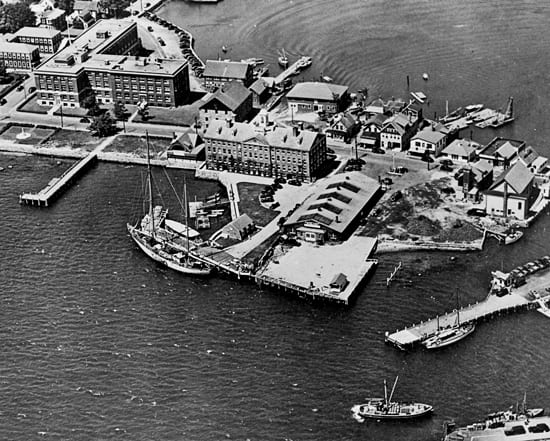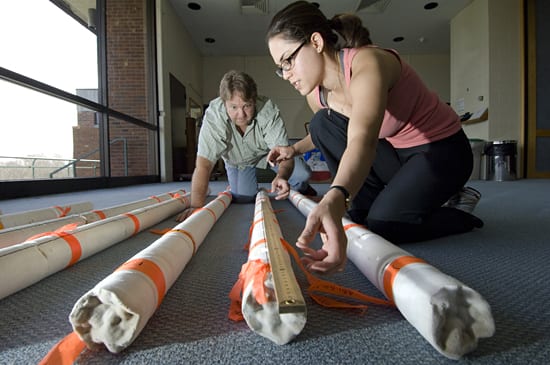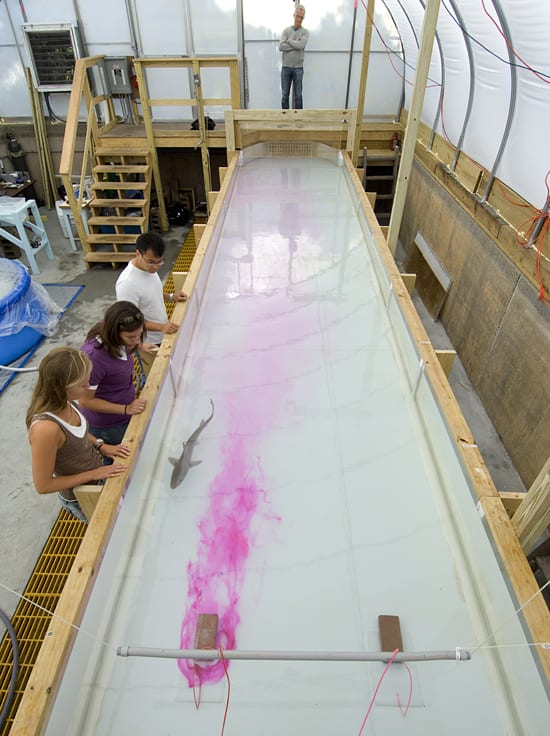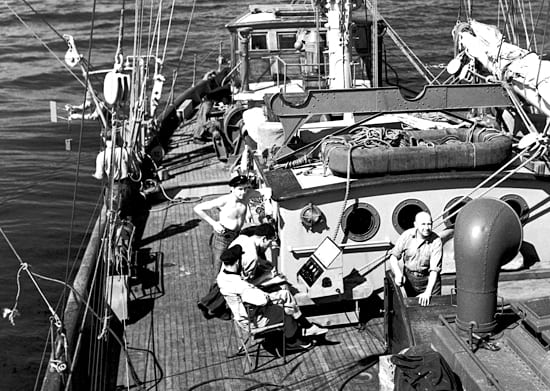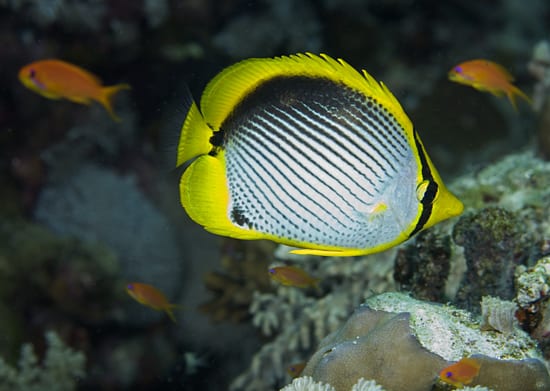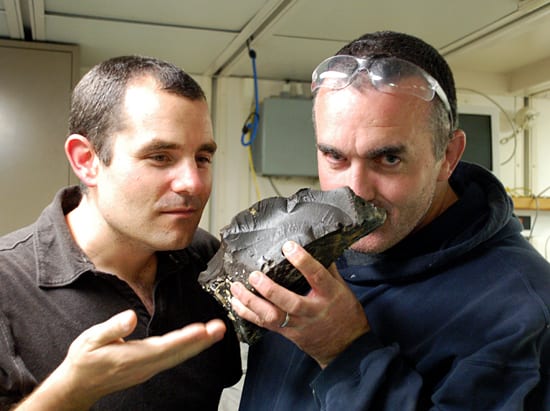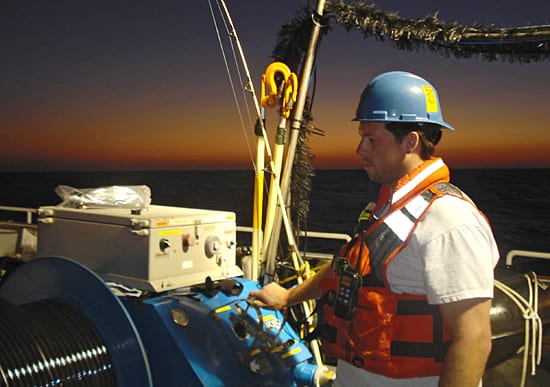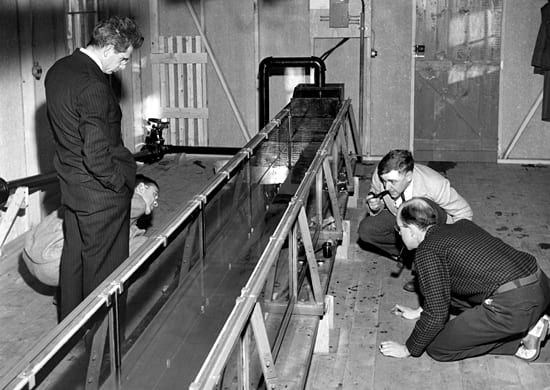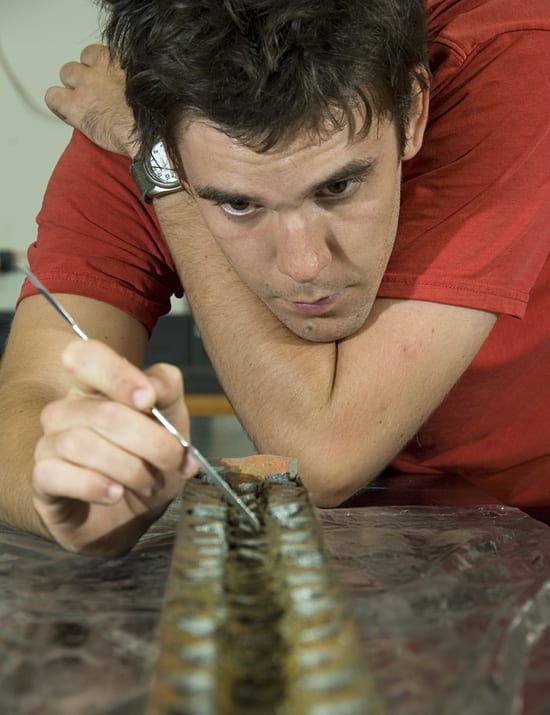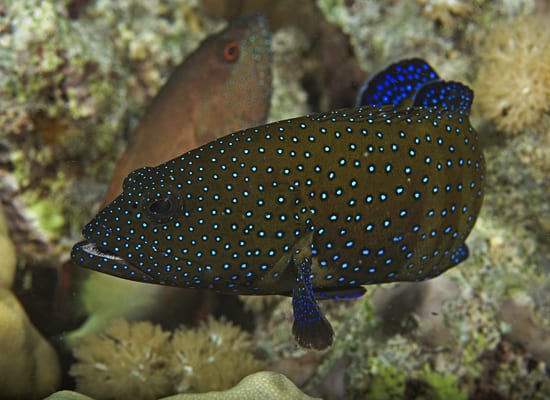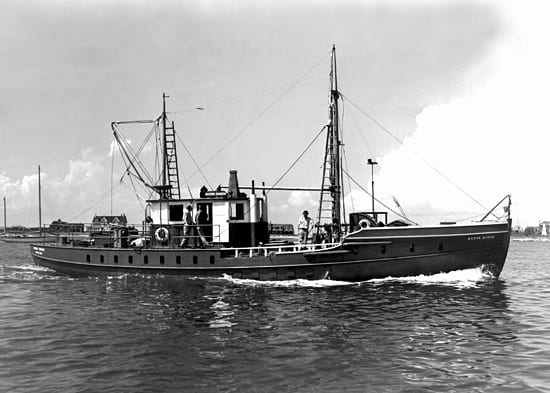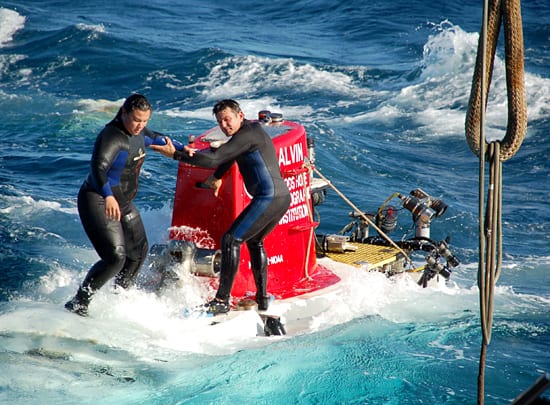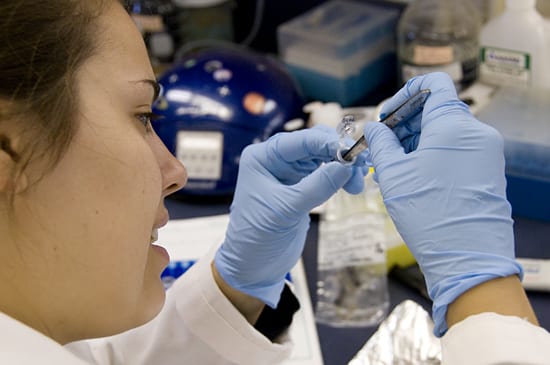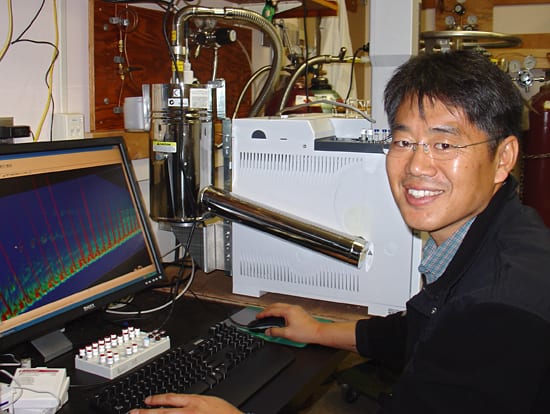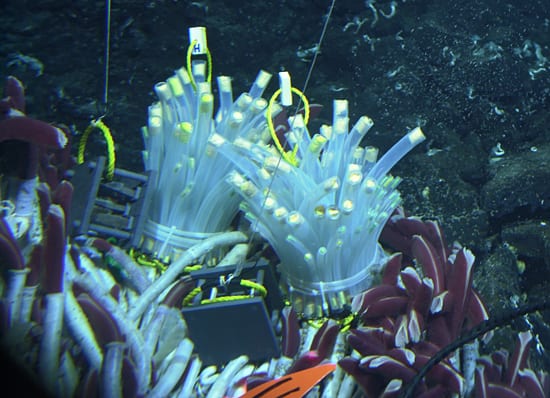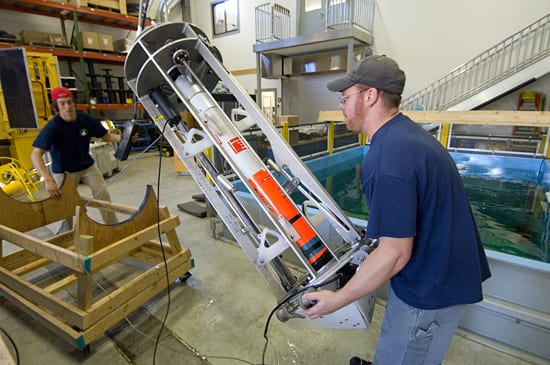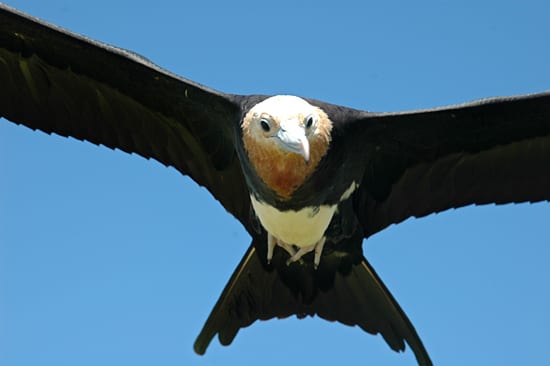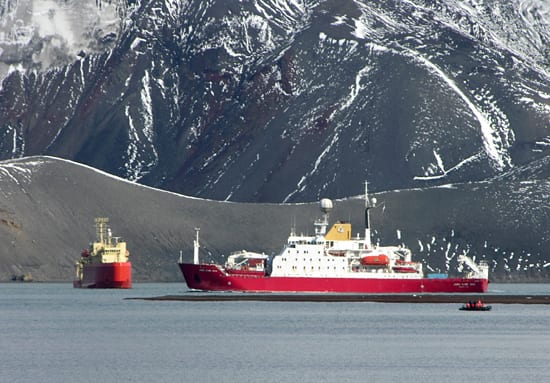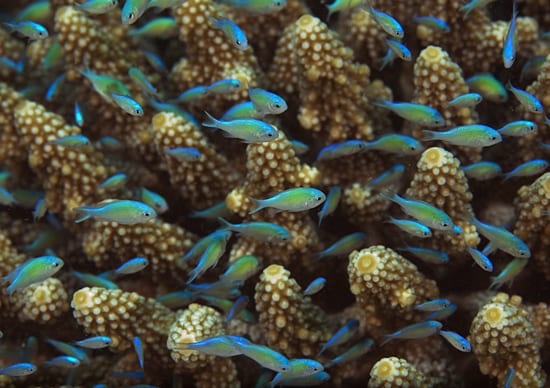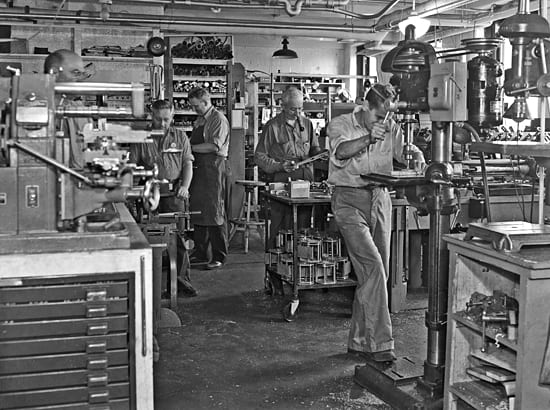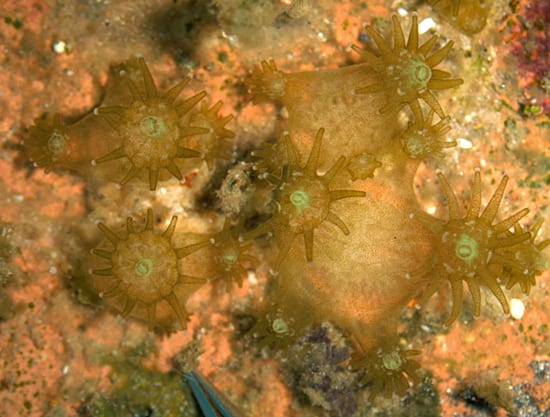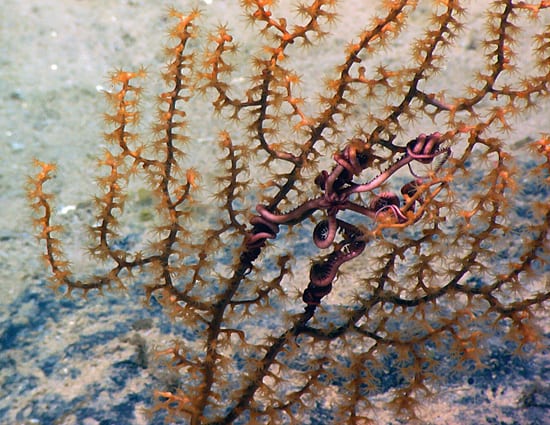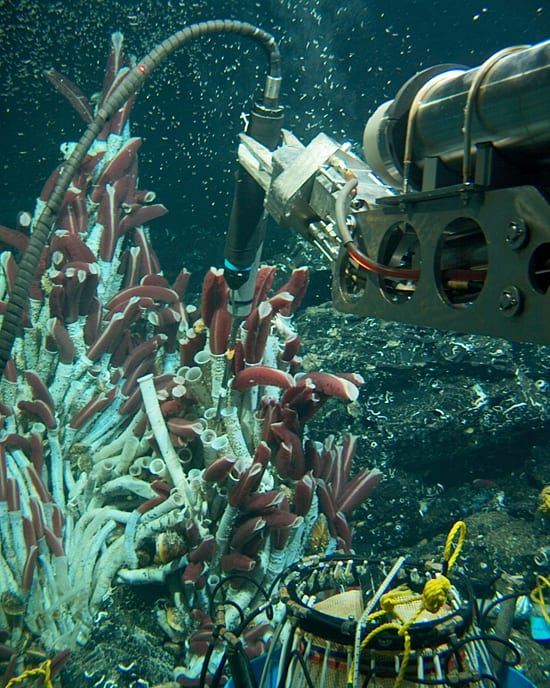Multimedia Items
WHOI, before expansion
Before wartime expansion in the 1940’s and 50’s, WHOI facilities consisted of the laboratory, the pier for Atlantis, the small boat basin behind the pier, and a small pump house/utility…
Read MoreSkeleton records
MIT-WHOI Joint Program student Whitney Bernstein and her advisor, Konrad Hughen of the Marine Chemistry & Geochemistry Department, sort and measure cores of massive corals (Porites spp.) collected from the…
Read MoreUnderwater sensing
WHOI biology adjunct scientist Jelle Atema (top in photo) and students Julia Spaet, Danielle Dixson and Joel Buytkins perform a shark sensory experiment in the Environmental Systems Lab. The research…
Read MoreCurrent geeks
Bill von Arx and Henry Stommel developed a powerful method of observing surface currents from a ship underway. The procedure relied on the electric potentials induced by the movement of…
Read MoreBlackback in the Red Sea
A blackbacked butterflyfish (Chaetodon melannotus) feeds on soft corals in the along the Red Sea coast of Saudi Arabia in an area known as the Farasan Banks. An international team…
Read MoreHeading off HABs
Don Anderson (center), a senior scientist in the WHOI Biology Department, testified in September 2009 before the U.S. House of Representatives Committee on Science and Technology, which is drafting legislation…
Read MoreScoping out seepage
Each year, millions of tons of methane and thousands of barrels of oil seep out of the ocean floor. On a recent cruise aboard the RV Atlantis, Christopher M. Reddy…
Read MoreNight shift
WHOI engineer Peter Koski from the Applied Ocean Physics and Engineering Department starts the acoustic testing in May 2009 on the R/V Endeavor at the Atlantic Undersea Test and Evaluation…
Read MoreWatching the flow
in 1948, this WHOI flume was located in a small building next to the white house, behind the Bigelow Laboratory, for studies of phenomena that included the flow of fresh-water…
Read MoreDeeper into the delta
Summer Student Fellow Sam Zipper spent his summer on balmy Cape Cod studying the western Canadian Arctic. Zipper analyzed sediment cores from the Mackenzie River Delta with his WHOI sponsor,…
Read MoreSome serious teeth
WHOI biologist Simon Thorrold snapped this image of a peacock grouper (Cephalopholus argus) while working in Saudi Arabia in June 2009. Thorrold and an international team conducted a rapid, ecological…
Read MoreHeavily timbered
A gift from the closed Carnegie Institution’s Dry Tortugas laboratory, the 70-foot (21-meter) Anton Dohrn made 40 cruises from 1940 to 1947 for WHOI investigations from the Gulf of Maine…
Read MoreBalance onboard
The Human Occupied Vehicle (HOV) Alvin averages 150-175 dives per year. Here 3rd mate Kami Bucholz (left) and engineering assistant Anton Zafereo balance onboard HOV Alvin during recovery operations. The…
Read MoreAfter the maiden voyage
While her Oberlin classmates accepted their diplomas at a graduation ceremony in Ohio, Summer Student Fellow Eleanor Bors was aboard the R/V Kilo Moana along with her advisor, WHOI biologist…
Read MoreWHOI-South Korean exchange
It is considered South Korea’s worst oil spill. On Dec. 7, 2007, the Hebei Spirit leaked more than 11,000 tons of oil near Taean National Marine Park. Three different types…
Read MoreTubeworms make good real estate
To test whether complex physical structure could maintain the species diversity hydrothermal vent communities in areas of chemosynthetic primary production, Breea Govenar, a Postdoctoral Investigator in the Biology Department, deployed…
Read MoreTesting tank
Engineering assistant Tom Lanagan and engineer Dan Duffany test a new launcher for the Archerfish — a mine neutralizing remotely operated vehicle (ROV) used to eliminate subsurface mines with a…
Read MoreWhat are you doing on my island?
McKean Island —one of the reef-fringed islands of the world’s largest marine protected area, the Phoenix Islands Protected Area — harbors large nesting populations of lesser frigate bird (Fregata ariel).…
Read MoreDive in
Dive and Discover‘s Expedition 10 explored one of the coldest, most remote places on our planet — the Southern Ocean surrounding Antarctica. In March 2006, a team of researchers aboard…
Read MoreWave of blue and green
A school of colorful, bluegreen chromis (Chromis viridis) seek shelter in a coral colony in the Farasan Banks. An international team of scientists, including WHOI biologist Simon Thorrold, conducted a…
Read MoreEarly machining
In this 1946 photograph, five men work in the WHOI machine shop that was set up on the ground floor of the Bigelow Laboratory in 1940. Ralph Bodman is behind…
Read MoreMustard coral
Young polyps of the mustard coral, Porites astreoides, extend their tentacles during feeding time at the Bermuda Institute of Ocean Sciences (BIOS). These 12-week old spat, reared from birth in…
Read MoreHome sweet home
Seamounts support a vast variety of cold water coral communities. These deep-sea corals themselves host more than 1,300 different species of animals. Some animals are often unique to their seamount…
Read MoreWithin arms reach
A pilot on board the Human Occupied Vehicle Alvin uses one of the vehicles two hydraulically-powered robotic arms to probe tube worms on the sea floor of the East Pacific…
Read More
